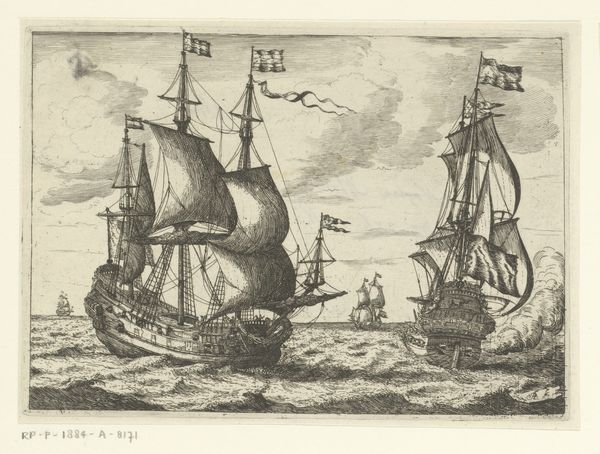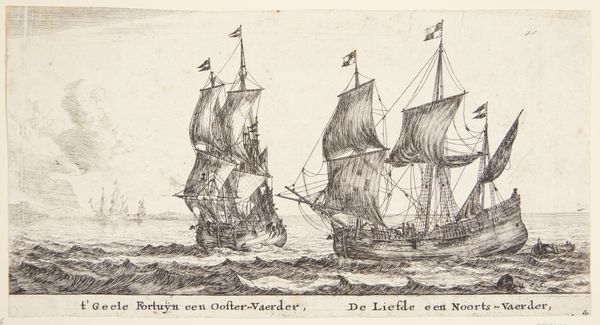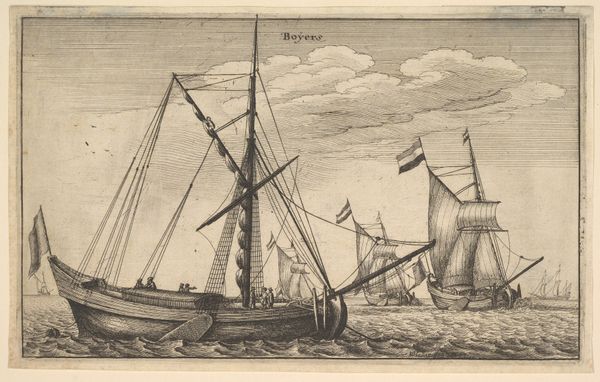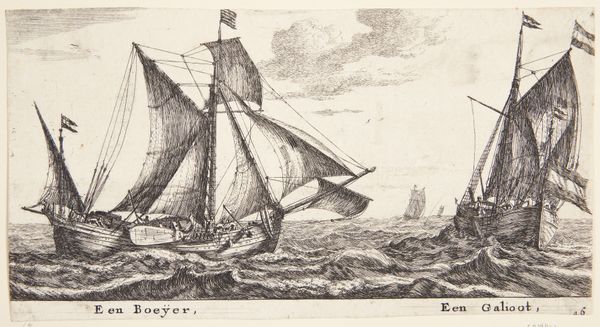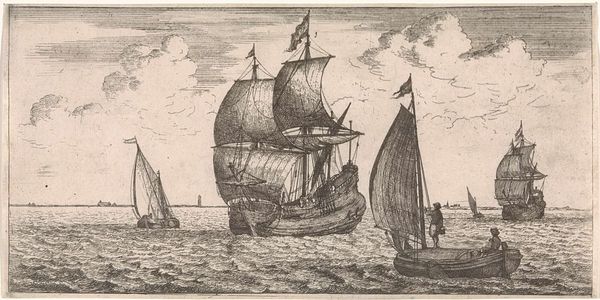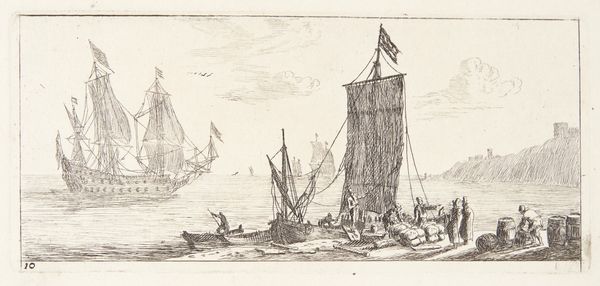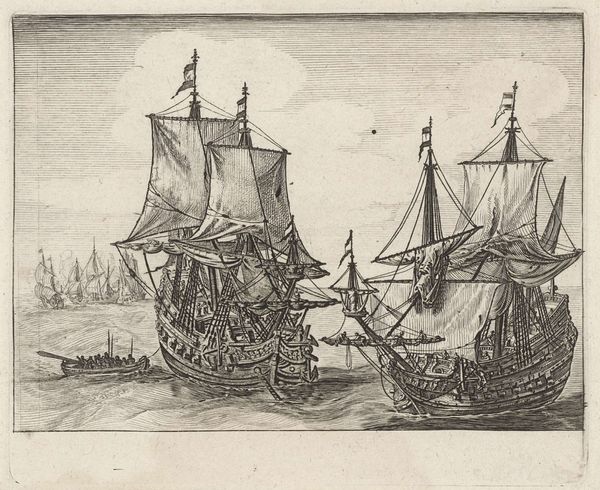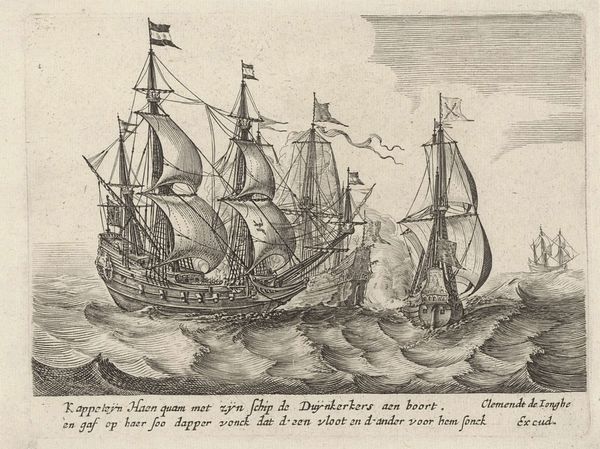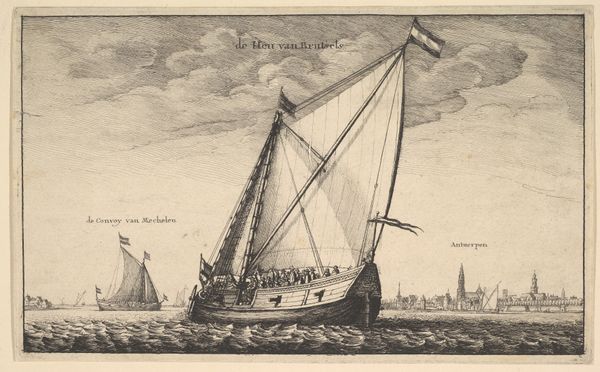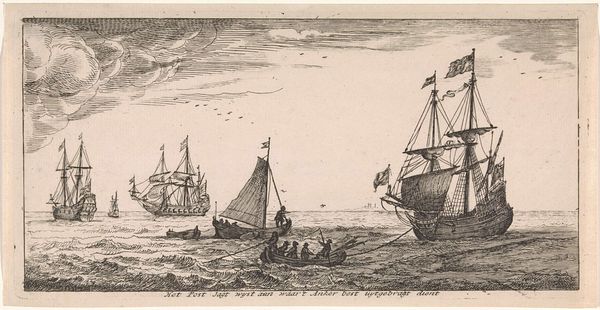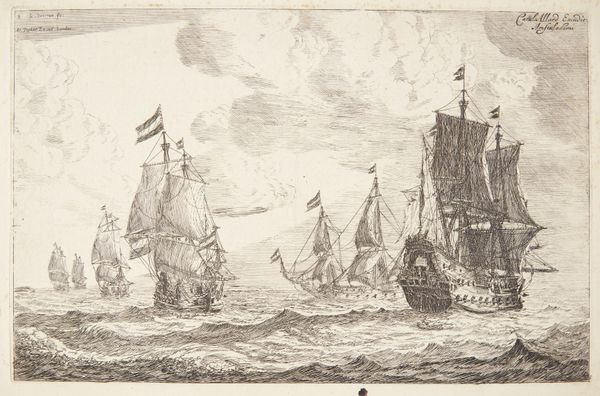
To skibe for sejl, det ene en jagt fra de hollandske stater 1652 - 1654
0:00
0:00
print, etching
#
baroque
#
dutch-golden-age
# print
#
etching
#
landscape
Dimensions: 135 mm (height) x 251 mm (width) (bladmaal)
Editor: This etching by Reinier Nooms, made sometime between 1652 and 1654, depicts "Two Ships Under Sail." It feels very detailed for a print, capturing the movement of the waves and the texture of the sails. What draws your eye in this piece? Curator: I'm fascinated by how Nooms utilizes the etching process to depict maritime life and commerce. Notice how the lines aren't just descriptive but also suggest the labor involved – both the artist’s hand and the labor of those who built and sailed these vessels. It speaks volumes about the Dutch Golden Age’s dependence on seafaring trade. What materials do you think they would be transporting? Editor: Maybe spices or textiles? Something that suggests long-distance trade. I suppose the act of creating this print also plays into that trade, allowing the image itself to circulate. Curator: Precisely. Prints democratized imagery, allowing wider access to these maritime scenes. Consider the socio-economic context: this isn't just about pretty ships; it’s about the rise of a mercantile class and their engagement with global trade networks, brought home in print form to be bought and consumed. How might the content have appealed to wealthy merchants? Editor: They might see reflections of their own success and ventures? A sort of celebration of their source of income, but in a more palatable, artistic form? Curator: Exactly. And the choice of etching is deliberate. It’s a relatively accessible printmaking technique, reflecting a certain level of industrialized image production. Mass production! This wasn't for an elite few. Think about the implications of art functioning as both object and a record of production at this scale. Editor: So, it's less about individual artistic genius and more about the process as part of a larger economic system? It really reframes my understanding of it. Curator: Indeed. Looking closely, the ships themselves are products of labor, meticulously built and maintained. And then reproduced to a wider public, consumed as images. Editor: I never thought of a print in terms of labor, materials, and the culture of consumption. This has given me a completely fresh perspective!
Comments
No comments
Be the first to comment and join the conversation on the ultimate creative platform.
